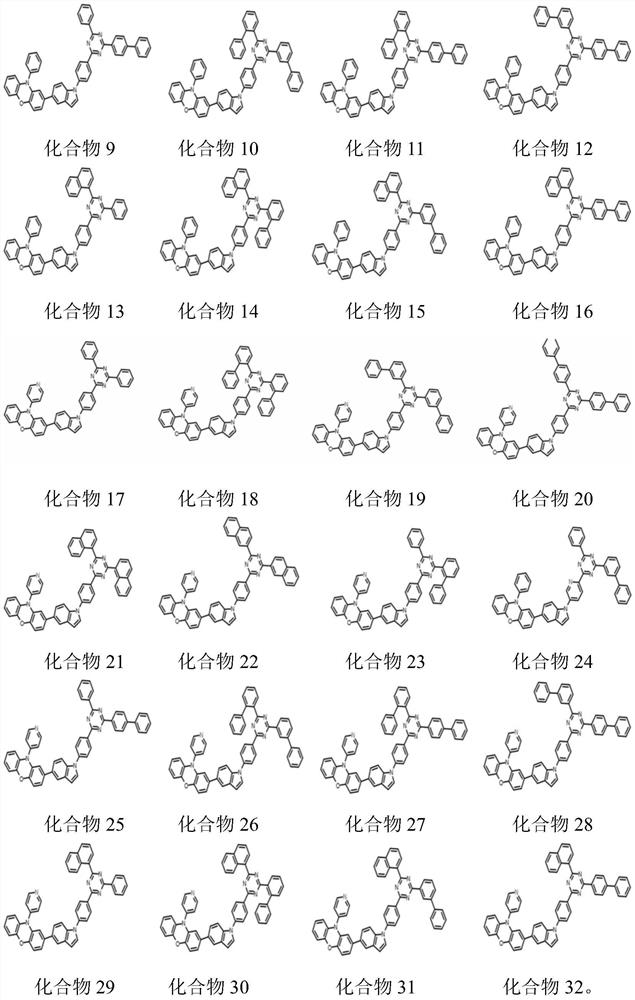Organic electroluminescent compound and application thereof
A compound and luminescent technology, which is applied in organic chemistry, luminescent materials, circuits, etc., can solve the problems of poor thermal stability, short life of organic light-emitting devices, and reduce the use degree, etc., to achieve increased glass transition temperature, high heat and chemical stability sex, avoid compound effects
- Summary
- Abstract
- Description
- Claims
- Application Information
AI Technical Summary
Problems solved by technology
Method used
Image
Examples
Embodiment
[0027]
[0028] Synthesis of Intermediate A1
[0029] In a 500mL one-necked flask, add 0.1mol of 5-bromoindole, 0.2mol of pinacol diborate, 0.2mol of potassium acetate, 1.50g of [1,1'-bis(diphenylphosphino) ) ferrocene] palladium dichloride, 350mL of dioxane, refluxed for 8h under nitrogen protection; after cooling, spin evaporated to remove dioxane, washed with 200mL of distilled water and extracted 3 times with dichloromethane; - Recrystallization from dichloromethane gave 21.8 g of intermediate A1 with a yield of 90%.
[0030] Synthesis of Intermediate A2
[0031] In a 50mL one-necked flask, add 10mmol of intermediate A1, 11mmol of 9-phenyl-9-(4-bromophenyl)fluorene, 20mmol of potassium carbonate, 50mg of tetrakistriphenylphosphopalladium, 20mL of Oxyhexane and 4.0mL of water were refluxed for 5h under the protection of nitrogen; after cooling, the dioxane was removed by rotary evaporation, washed with 20mL of distilled water and extracted three times with dichlorometh...
PUM
 Login to View More
Login to View More Abstract
Description
Claims
Application Information
 Login to View More
Login to View More - R&D
- Intellectual Property
- Life Sciences
- Materials
- Tech Scout
- Unparalleled Data Quality
- Higher Quality Content
- 60% Fewer Hallucinations
Browse by: Latest US Patents, China's latest patents, Technical Efficacy Thesaurus, Application Domain, Technology Topic, Popular Technical Reports.
© 2025 PatSnap. All rights reserved.Legal|Privacy policy|Modern Slavery Act Transparency Statement|Sitemap|About US| Contact US: help@patsnap.com



